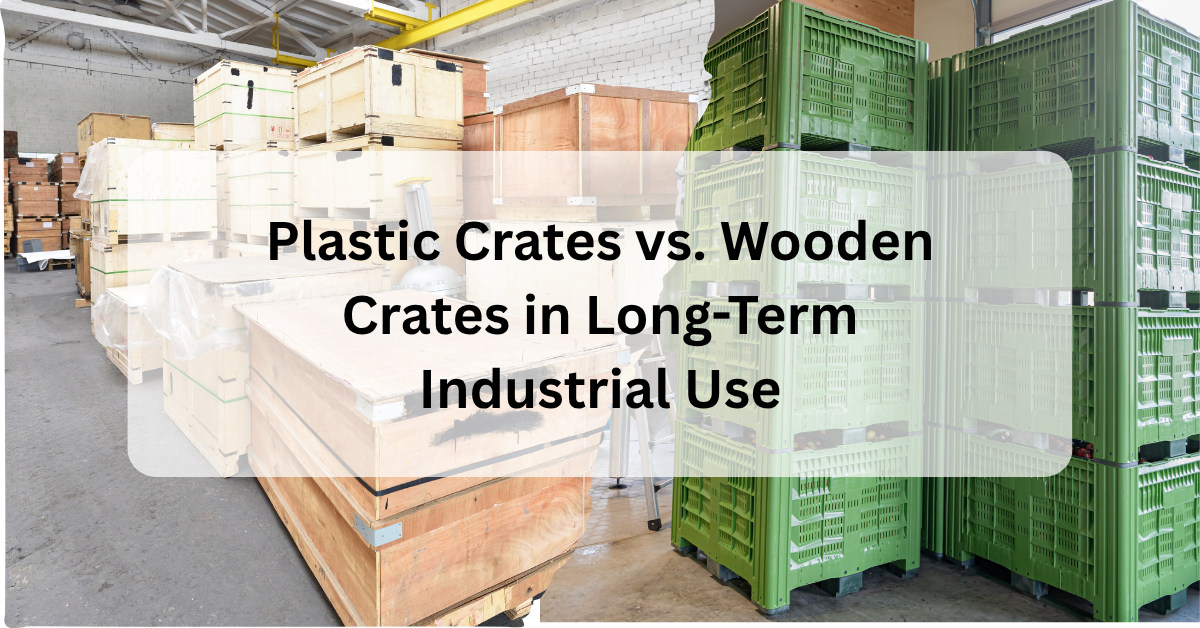When it comes to industrial packaging, many businesses assume plastic crates are the superior long-term solution. They’re lightweight, waterproof, and marketed as “reusable.” But is that really true? At Kaibeng Wooden Case Mfg Pte Ltd, after decades of providing professional crating services for exporters, machine movers, and logistics firms across Singapore, we’ve seen firsthand that wooden crates often outlast plastic ones in real-world industrial use.
In this article, we’ll break down the reusability myth surrounding plastic crates and explain why wooden crates remain the trusted choice for industries that demand durability, flexibility, and long-term value.
1. The Durability Debate: Plastic Isn’t as Long-Lasting as You Think
While plastic crates seem sturdy at first glance, their durability declines with repeated use. Exposure to UV rays, temperature fluctuations, and heavy loads makes plastic brittle and prone to cracking. Over time, they lose their load-bearing capacity — a serious issue for industrial or export applications.
By contrast, wooden crates can be refurbished and reinforced. A damaged panel or beam can easily be replaced without discarding the entire crate. This makes wooden crates more cost-effective and truly reusable over multiple shipping cycles.
Singapore’s industrial movers and exporters understand that a cracked plastic crate mid-shipment can cause delays, damage, and losses — costs that far outweigh any initial savings.
2. Wooden Crates Can Be Repaired — Plastic Can’t
One of the biggest advantages of wooden crates lies in their repairability. Instead of throwing away a damaged crate, users can replace only the affected sections. This not only extends the crate’s lifespan but also aligns with Singapore’s push toward a circular economy.
In contrast, when a plastic crate cracks or warps, there’s usually no feasible repair option. It must be discarded and replaced, contributing to waste and higher long-term costs.
To promote sustainable business practices, agencies like the National Environment Agency (NEA) encourage reusing and repairing materials wherever possible — a principle that wooden crates naturally support.
3. Reusable Industrial Crates for Heavy Machinery and Equipment
When dealing with heavy or precision machinery, using the right crating service is critical. Plastic crates, often designed for lighter goods, can deform under the weight of industrial equipment.
At Kaibeng, we design custom wooden crates that account for:
- The exact weight distribution of machinery
- The vibration and shock resistance needed during relocation
- Moisture and pest protection for tropical climates
- Coordination with machine movers for seamless lifting and transport
These crates are engineered for repeated use and can handle the stress of multiple local and international shipments — far beyond what plastic crates can endure.
4. Sustainability: Wood Is the Real Renewable Resource
Another misconception is that plastic is better for the environment because it can be recycled. However, recycling plastic crates requires significant energy and chemical processing, and many end up in landfills due to contamination or degradation.
Wooden crates, on the other hand, are made from renewable, biodegradable materials. Damaged crates can be repurposed into pallets, composted, or even upcycled into secondary packaging.
Businesses seeking sustainable crating solutions in Singapore can rely on Kaibeng’s eco-friendly manufacturing process, which includes responsible wood sourcing and ISPM 15-compliant heat treatment for export.
For companies aiming to reduce their carbon footprint, wood remains the smarter, greener choice.
5. Cost Efficiency Over Time
The true cost of a crate isn’t just its purchase price — it’s how many times it can be safely reused. Wooden crates can last for years when maintained properly, whereas plastic ones often fail after a few cycles due to brittleness or warping.
Kaibeng’s clients often find that investing in well-crafted wooden crates leads to lower long-term costs. Our custom designs, reinforced corners, and heat-treated finishes ensure that each crate withstands multiple uses without compromising structural integrity.
Moreover, wooden crates can be easily modified or resized for future shipments, maximizing value across projects.
6. Real-World Experience: Why Machine Movers Prefer Wooden Crates
Professional machine movers in Singapore consistently prefer wooden crates for relocating high-value industrial equipment. The reason is simple: wood absorbs impact better than plastic.
During relocation or export, vibrations and mechanical stress are inevitable. Wooden crates provide a natural shock buffer that minimizes movement and internal damage. For precision machinery or delicate components, this difference can be the line between a smooth delivery and an expensive repair.
The Smarter, More Sustainable Crating Solution
The myth that plastic crates are more reusable has been debunked by experience, science, and sustainability logic. For industrial, export, and machine-moving applications, wooden crates deliver superior performance, longevity, and environmental responsibility.
By partnering with Kaibeng Singapore, businesses gain access to:
- Expert crating services for heavy and delicate machinery
- Custom wooden crate designs for multiple-use cycles
- Full coordination with machine movers and export teams
- Sustainable materials that meet global standards
When you need a packaging solution that lasts — choose the crate that works as hard as your business does.
Learn more about Kaibeng’s custom crating services in Singapore and how we help companies move and export safely, efficiently, and sustainably.
